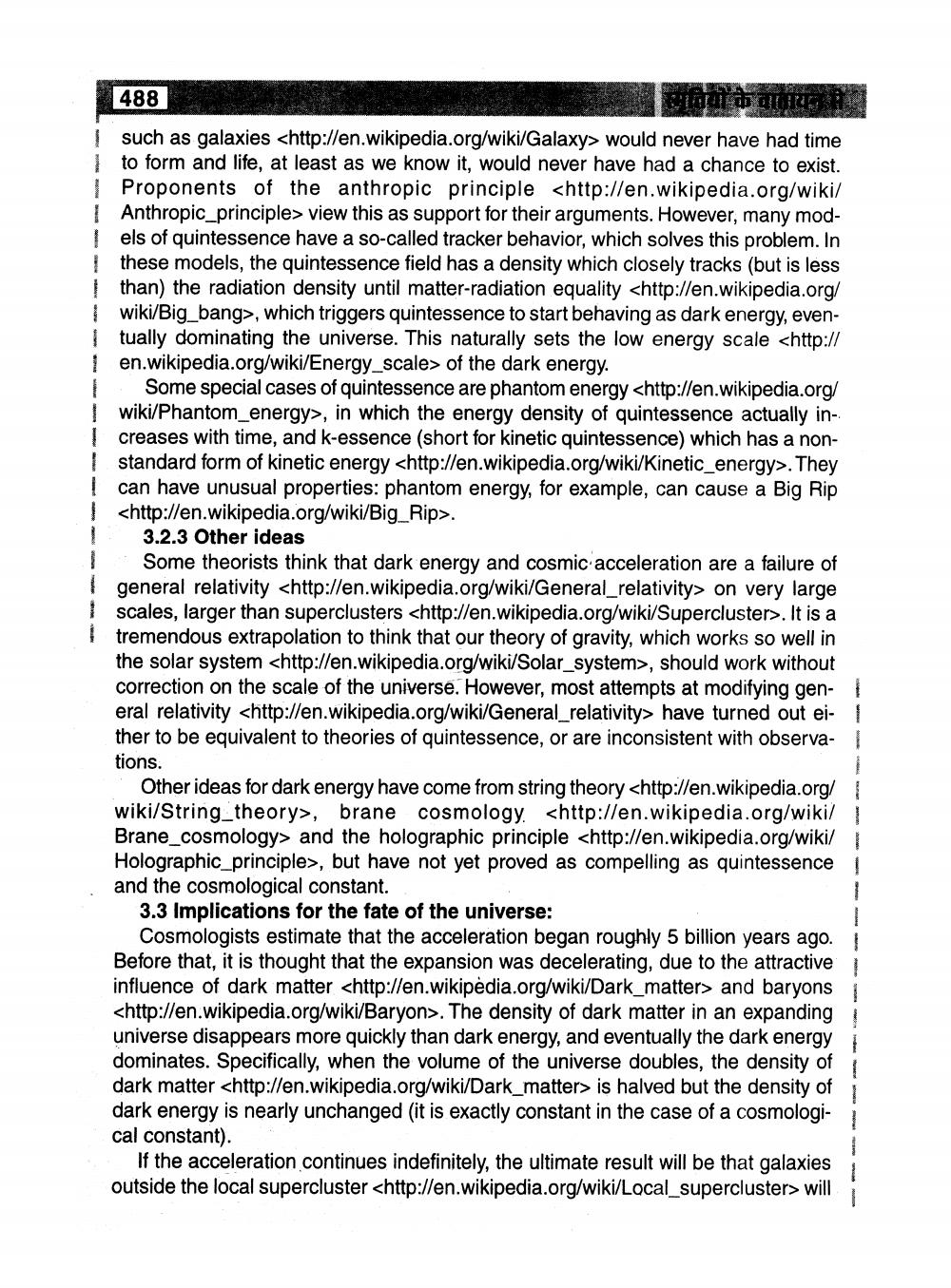________________
488
of the 1 such as galaxies <http://en.wikipedia.org/wiki/Galaxy> would never have had time 1 to form and life, at least as we know it, would never have had a chance to exist. 1 Proponents of the anthropic principle <http://en.wikipedia.org/wiki/ | Anthropic_principle> view this as support for their arguments. However, many mod1 els of quintessence have a so-called tracker behavior, which solves this problem. In I these models, the quintessence field has a density which closely tracks (but is less 1 than) the radiation density until matter-radiation equality <http://en.wikipedia.org/ 1 wiki/Big_bang>, which triggers quintessence to start behaving as dark energy, even1 tually dominating the universe. This naturally sets the low energy scale <http:// 1 en.wikipedia.org/wiki/Energy_scale of the dark energy. 1. Some special cases of quintessence are phantom energy <http://en.wikipedia.org/ 1 wiki/Phantom_energy>, in which the energy density of quintessence actually in
creases with time, and k-essence (short for kinetic quintessence) which has a nonstandard form of kinetic energy <http://en.wikipedia.org/wiki/Kinetic_energy>. They can have unusual properties: phantom energy, for example, can cause a Big Rip <http://en.wikipedia.org/wiki/Big_Rip>.
3.2.3 Other ideas 1 Some theorists think that dark energy and cosmic acceleration are a failure of
general relativity <http://en.wikipedia.org/wiki/General_relativity> on very large scales, larger than superclusters <http://en.wikipedia.org/wiki/Supercluster>. It is a tremendous extrapolation to think that our theory of gravity, which works so well in the solar system <http://en.wikipedia.org/wiki/Solar_system>, should work without correction on the scale of the universe. However, most attempts at modifying general relativity <http://en.wikipedia.org/wiki/General_relativity> have turned out ei-1 ther to be equivalent to theories of quintessence, or are inconsistent with observa-1 tions.
Other ideas for dark energy have come from string theory <http://en.wikipedia.org/ wiki/String_theory>, brane cosmology. <http://en.wikipedia.org/wiki/ Brane_cosmology> and the holographic principle <http://en.wikipedia.org/wiki/ 1 Holographic principle>, but have not yet proved as compelling as quintessence and the cosmological constant.
3.3 Implications for the fate of the universe:
Cosmologists estimate that the acceleration began roughly 5 billion years ago. Before that, it is thought that the expansion was decelerating, due to the attractive influence of dark matter <http://en.wikipedia.org/wiki/Dark_matter> and baryons <http://en.wikipedia.org/wiki/Baryon>. The density of dark matter in an expanding universe disappears more quickly than dark energy, and eventually the dark energy dominates. Specifically, when the volume of the universe doubles, the density of dark matter <http://en.wikipedia.org/wiki/Dark_matter> is halved but the density of dark energy is nearly unchanged (it is exactly constant in the case of a cosmological constant).
If the acceleration continues indefinitely, the ultimate result will be that galaxies outside the local supercluster <http://en.wikipedia.org/wiki/Local_supercluster> will




